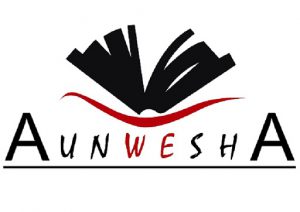Redefining Competitive Advantage: The Strategic Imperative of Deep Document Understanding
Published: 3rd April, 2025
The enterprise knowledge landscape is undergoing a radical transformation. Once seen as static repositories, organizational documents are now viewed as high-value assets containing trade secrets, compliance-critical information, and market intelligence. As this recognition grows, so too does the market for Deep Document Understanding (dDU)—a class of technologies that enable organizations to extract, contextualize, and act on insights buried deep within unstructured data.
Yet, amid a growing ecosystem of AI-driven tools, few solutions go beyond surface-level capabilities. Aunwesha’s LearnITy™ suite stands apart, offering a purpose-built stack designed not only to process documents—but to understand them in the nuanced context of each enterprise’s business landscape.
An Expanding Market, But an Incomplete Promise
The global document AI market is projected to exceed $25 billion by 2030, driven by increasing digitization, remote workflows, and AI adoption across legal, financial, healthcare, and government sectors. Despite this rapid growth, most existing solutions fall into one of two categories:
- Cloud-Based Point Solutions: Vendors offering OCR, entity extraction, or form parsing—delivered via SaaS.
- Foundational Model Integrators: Companies wrapping GPT-style models to summarize or extract content with general-purpose prompts.
While these solutions show promise, they suffer from three critical limitations:
1. Cloud Exposure Risks: A Threat to Trade Secrets
Storing sensitive enterprise documents on third-party cloud infrastructure introduces intellectual property (IPR) risk. Contracts, regulatory filings, R&D reports, and board minutes often contain:
- Proprietary algorithms
- Competitive pricing models
- Strategic partnerships
Transferring such documents to off-prem or black-box cloud APIs compromises compliance with data residency laws and confidentiality obligations. Enterprises in BFSI, defence, and pharmaceuticals cannot afford such exposure.
Aunwesha’s LearnITy™ Knowledge Engine (LKE) is built for on-premise deployment, hybrid environments, and enterprise-controlled pipelines, ensuring that document processing occurs within the organization’s secure perimeter.
2. Foundational Models: Too Shallow for Deep Context
Foundation models like GPT-4 and Claude excel at linguistic tasks, but they struggle with:
- Organization-Specific Semantics: Understanding custom jargon, policy nuances, or contract frameworks
- Cross-Document Reasoning: Mapping insights from annual reports to procurement contracts to audit findings
- Business Intent Inference: Extracting not just facts, but purpose—e.g., identifying risk mitigation clauses or strategic expansions
These models operate in a "black box" and lack awareness of the business logic, workflows, and internal dependencies that inform decisions.
In contrast, LearnITy™ integrates business rules, domain ontologies, and human-in-the-loop validation into its comprehension pipeline—yielding business-aware AI outputs.
3. Custom Applications Need Custom Engines
Emerging enterprise needs—like document comparison, regulatory delta tracking, and semantic compliance checks—demand bespoke capabilities not available from off-the-shelf tools.
For example:
- Comparing an NDA against a baseline template to flag risk-inducing clauses.
- Tracking changes in safety protocols across multiple versions of technical manuals.
- Verifying that a supplier’s sustainability report complies with evolving ESG frameworks.
These use cases go beyond standard information retrieval or summarization—they require fine-grained semantic alignment, multi-document traceability, and temporal reasoning.
Only a purpose-built platform like LearnITy™ can enable this level of precision—through a Document Comprehension DSL (Domain-Specific Language) that allows organizations to define document logic, dependencies, and transformation pipelines explicitly.
Proprietary Innovation: The LearnITy™ Edge
At the heart of Aunwesha’s competitive advantage is its proprietary Document Comprehension DSL, which:
- Allows business users to define domain-specific extraction patterns without writing raw code
- Enables reusability and consistency across different document types
- Powers traceable, auditable, and explainable AI outputs
This DSL is part of a broader platform strategy that combines:
- A document-aware knowledge graph
- Visual pipeline builders for ingestion, transformation, and QA
- A chatbot interface (LearnITy™ Conversation) for querying organizational knowledge
The result is not just automation—but intelligent augmentation of human expertise.
Conclusion: Strategy Begins with Understanding
As enterprises race toward data-driven decision-making, they are beginning to realize that strategic insights don’t just lie in dashboards or transactional systems—they are buried in documents.
Generic tools can parse. Aunwesha’s LearnITy™ understands.
By aligning technological sophistication with business relevance, and by protecting organizational sovereignty over sensitive data, Aunwesha is shaping the next era of enterprise intelligence—one document at a time.
